by Sunny | Nov 29, 2018 | 01 What's New, DNA
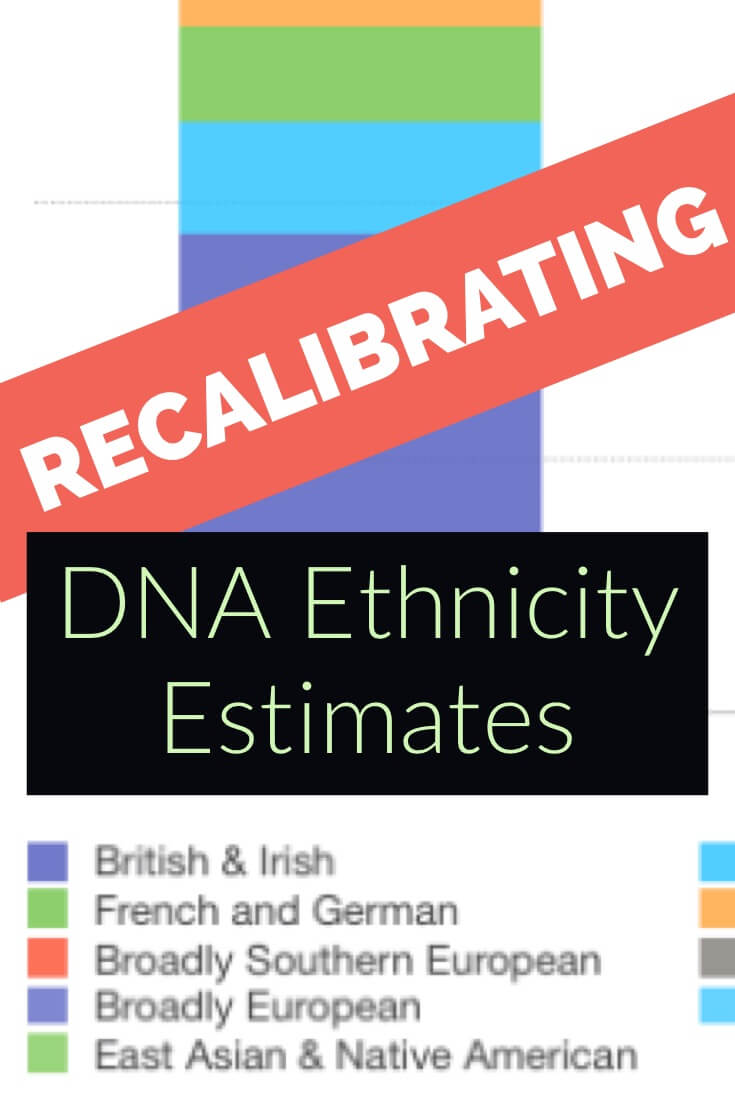 Genealogy testing companies have been hard at work recalibrating your ethnicity calculations based on new and better data. Here’s the latest from Your DNA Guide Diahan Southard.
Genealogy testing companies have been hard at work recalibrating your ethnicity calculations based on new and better data. Here’s the latest from Your DNA Guide Diahan Southard.
Family History DNA Pie Charts and Percentages
Remember that the pretty pie charts and percentages are based on fancy math and reference populations. The initial reference populations released by our testing companies were a great start, but many categories lacked sufficiently high numbers of people to represent all of the facets of a population. In the 10+ years since their release, many updates have been made. But the fancy math that is used to produce our percentages can only be as fancy as the numbers you give it. The numbers have been hard at work at Family Tree DNA, AncestryDNA and 23andMe in the past couple of months with the result being a major overhaul in the way our ethnicity results are reported.
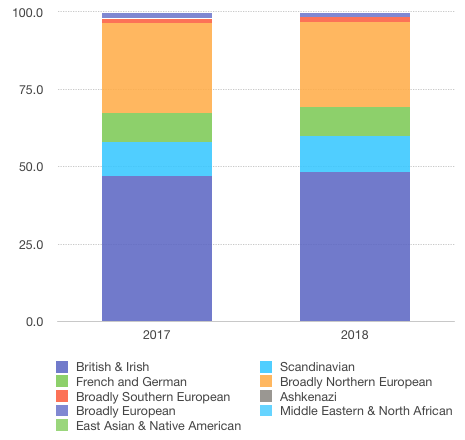
Image 1
23andMe
We recently reported about the update at 23andMe and their increase from 31 reference populations to 150. However, for me, the totally 100% European me, there wasn’t much excitement. As you can see in the 23andMe chart, I had a couple of numbers move up or down slightly, but not anything to write home about. However, I am certain those with South American, or Eastern European ancestry have a much different story. 23andMe added many new reference populations to better represent these underrepresented areas of the world, a move which has likely made a big difference for the ever diversifying pool of individuals who have taken a DNA test.
AncestryDNA
AncestryDNA also released their latest Ethnicity update in September, boasting an additional 13,000 reference samples to their database. They not only upgraded their numbers, but also shifted some of their categories around based on this new data. They seem to not be quite sure what to do with Ireland, as in early 2017 it was its own category, later moving in with Wales and Scotland, and now appears in this latest update as simply Ireland and Scotland. My previous numbers from AncestryDNA seemed to at least loosely reflect my heritage (meaning that I do actually have people in my genealogy chart from a few of these places).
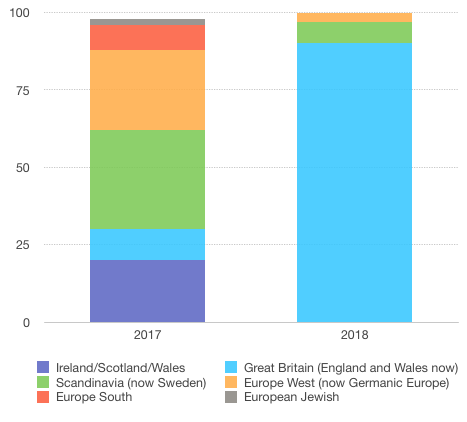
Image 2
But the new DNA numbers? Big Changes.
I have one set of great grandparents from Germany, but it looks like nearly all my German was sucked into England, but miraculously, they seemed to have precisely found my Swedish 2X great grandmother, with the 7% that I should have from that area.
With the new update, though I am sad to see my German go, AncestryDNA is now more fully in line with the results I have received from 23andMe, LivingDNA, and MyHeritage, all of which put my England/British Isles count up around 90%. If I compare my results from various companies and combine any subcategories into one England/British Isles category, indicate Scandinavian, and then lump everything else together, the results from the four companies are actually quite similar (I don’t have my own results at Family Tree DNA, only my parents).
My Family History DNA Results
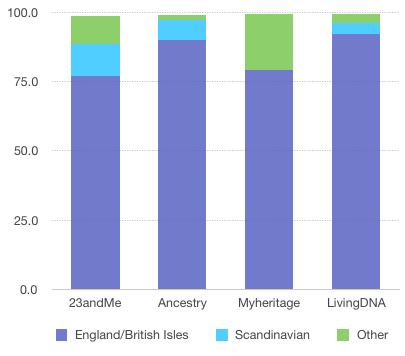
Image 3
Here’s how my results currently stack up at each of these websites. (Image 3)
Which DNA Testing Company to Choose
So which company is the best at all of this? Well, I usually say that if you test everywhere, your “true” answer is likely somewhere in the middle. But really, you can determine which company is best for you by examining their reference populations, and determining which company is most likely able to meet your goals.
In the end, it is always good to remember two things:
- Your DNA does not fully represent your family history, so your ethnicity results can’t possibly tell you everything about your heritage.
- This technology is purposefully titled as an estimate. So be sure you treat it that way.
Learn More about Genetic Genealogy
Recommended reading at Genealogy Gems: Understanding DNA Ethnicity Estimates
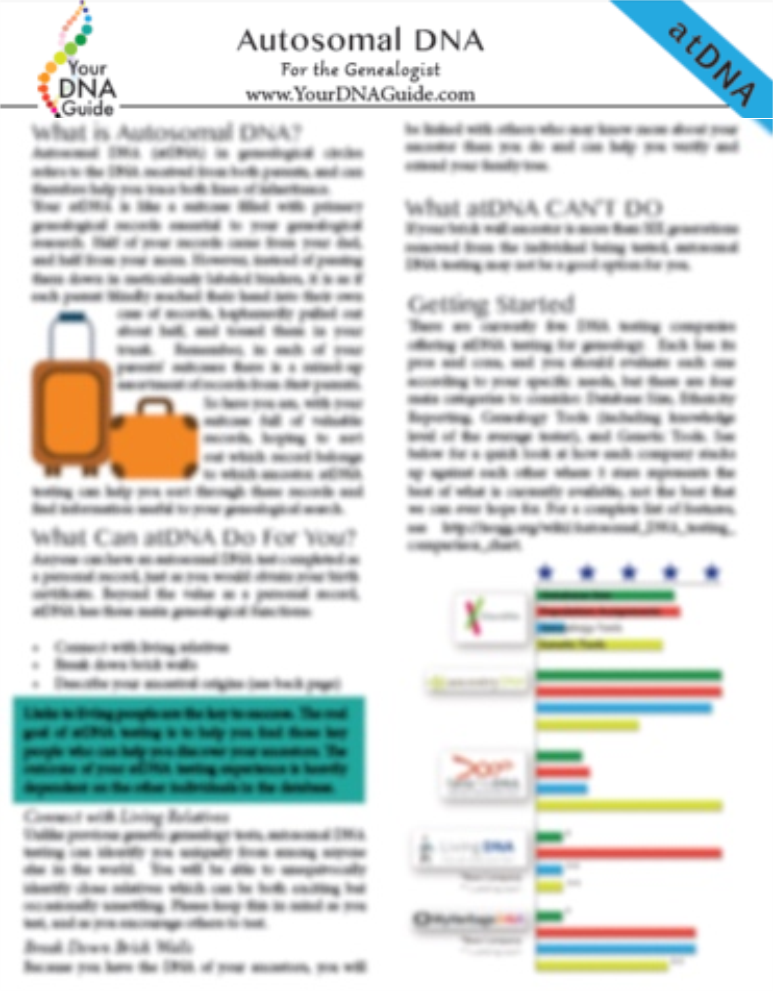
Get Diahan’s quick reference guides including Autosomal DNA for the Genealogist at the Genealogy Gems store.
by Lisa Cooke | Sep 2, 2017 | 01 What's New, Ancestry, DNA, MyHeritage
Has it been awhile since you have perused your DNA matches? Here’s how reviewing your DNA test results regularly can help your family history.

By now, many (if not most) of the genealogists I meet at conferences have had their DNA tested. Good for you! But how often are you checking on your DNA matches? It’s easy to forget about them after that first exciting look at your match list and the flurry of emails that you received. You should be checking in regularly! Here are two great reasons why:
1. You may have new DNA matches.
 More and more people are flocking to these companies to have their own DNA tested. Why just this month, AncestryDNA announced they have tested 5 million people. It was only in January of 2017 that they announced they’d hit 3 million, so they’ve added more than two million people so far this year.
More and more people are flocking to these companies to have their own DNA tested. Why just this month, AncestryDNA announced they have tested 5 million people. It was only in January of 2017 that they announced they’d hit 3 million, so they’ve added more than two million people so far this year.
What this means is that just as new records are constantly being added online (we cover millions of new additions every Friday on this blog), so are new DNA test profiles. That means you will keep discovering new DNA matches in your list over time. That elusive cousin you’ve been hoping would test may do so tomorrow. A key relative on your dad’s side–maybe on a line with unknown parentage–may have tested three weeks ago, with results now pending. (Genealogy Gems Editor Sunny Morton told me she has had two ground-breaking DNA matches in the past two months alone. Lucky her!)
In AncestryDNA, you can actually sort to view new matches. From your AncestryDNA home page, click View all DNA matches. Then select the filter New by clicking on it.

AncestryDNA will now just show you, in order of degree of relation, any matches you haven’t yet clicked on to review more closely. This can be quite a time-saver. And it can also help remind you of any matches you may have already seen in passing but haven’t closely reviewed.
Another tip: under each of your AncestryDNA matches, you can also see how long it’s been since that person logged in, as shown here.
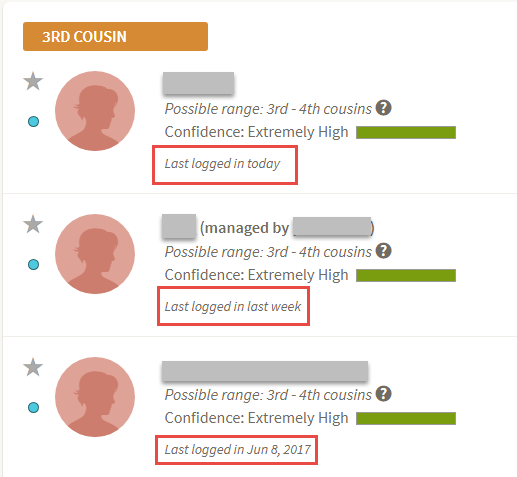
Perhaps you emailed someone a while back but never heard anything (or didn’t notice a response). If you can see that a person is actively using the site now, it may be worth reaching out again.
2. New tools to review your DNA matches may be available.
 While you’ve been busy recently tracking down census records and virtually visiting the courthouses, your DNA testing companies have been busily adding to their offerings. Just recently, MyHeritage revealed a beautiful, streamlined way to review each of your DNA matches. (Remember, it’s free to upload your DNA there. Click here to see how. You can also purchase a test from MyHeritageDNA.)
While you’ve been busy recently tracking down census records and virtually visiting the courthouses, your DNA testing companies have been busily adding to their offerings. Just recently, MyHeritage revealed a beautiful, streamlined way to review each of your DNA matches. (Remember, it’s free to upload your DNA there. Click here to see how. You can also purchase a test from MyHeritageDNA.)
At MyHeritage, your list of DNA matches shows your genetic relatives who have tested, how much DNA you share, and your possible relationship. The new DNA Match Review page helps you navigate that information and decide what to do with it. This is what the new MyHeritage DNA Match Review experience looks like:
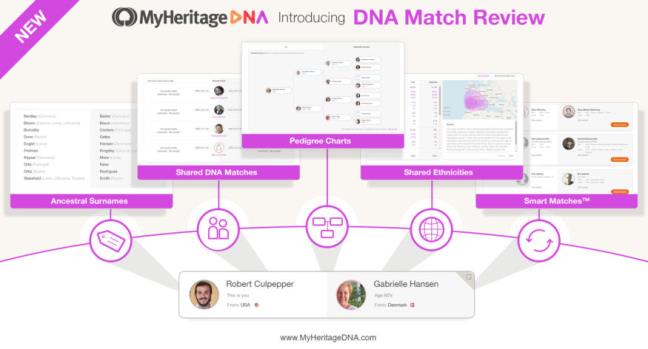
In the past, I’ve talked on this blog about several excellent (and still-evolving) tools on AncestryDNA, such as:
Competition in the DNA market space means that every company continues to add new and improved features to their site and testing experience. It’s worth checking back to explore what new information and tools might be available.
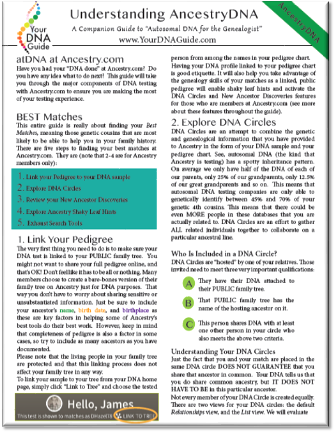 The Bottom Line
The Bottom Line
The bottom line here is that your testing company is always working to improve your DNA testing experience. So you should regularly return to your lists of DNA matches at the website of every company where you have tested. If you’re not sure how to use the site, please read some of my DNA posts on this blog and consult my quick reference DNA guides about these testing companies:
Keep checking back on those DNA matches. You never know what discovery might be just a click away.
Disclosure: This post contains affiliate links and Genealogy Gems will be compensated if you make a purchase after clicking on these links (at no additional cost to you). Thank you for supporting Genealogy Gems!
 Genealogy testing companies have been hard at work recalibrating your ethnicity calculations based on new and better data. Here’s the latest from Your DNA Guide Diahan Southard.
Genealogy testing companies have been hard at work recalibrating your ethnicity calculations based on new and better data. Here’s the latest from Your DNA Guide Diahan Southard. 














